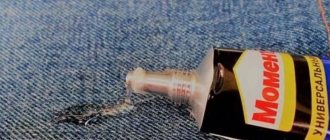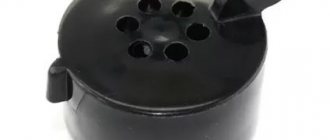22.01.2021
Septic tank
Editorial staff of the “New Place” website
Share
From this article you will learn
:
- Differences between a septic tank and a cesspool
- Factors influencing the frequency of septic tank pumping
- Risks of septic tank overflow
- Ways to check the sediment level in a septic tank
- The cost of pumping a septic tank from sewer trucks
- Self-pumping of the septic tank
- Cleaning the septic tank after pumping
- Is there a septic tank without pumping?
The first question for the owner of a private house without a centralized sewerage system is how often to pump out the septic tank. Unfortunately, there is no single answer to this; it all depends on the model and the general design of the autonomous sewage system. A simple cesspool requires a different pumping frequency than modern sewage treatment systems.
Methods for removing contaminants are no less important. You can turn to the services of specialists or carry out the work yourself by purchasing the necessary equipment. In our article we will tell you what factors influence the frequency of pumping the septic tank, how to arrange it and what to do after removing the contaminants.
Differences between a septic tank and a cesspool
The septic tank is designed to disinfect wastewater and drain water after filtration. At the same time, solid particles constitute a small amount of the total volume of waste.
In the cesspool, solids are mixed with liquid. But in a septic tank, the wastewater is separated into two parts: water and solid waste. The liquid part goes through cleaning, continuously being removed from the tank. The sludge precipitates, accumulating at the bottom of the container.
It is for this reason that you do not need to pump out a septic tank as often as a cesspool.
What is the difference between these two methods of organizing a sewer system?
A cesspool is a storage tank completely buried in the soil. If this tank is completely impervious to water, after a short period of time it will overflow: wastewater will begin to pour out of it.
To prevent this from happening, the side walls, as well as the bottom of the tank, must allow water to pass through. In this case, solid particles accumulate at the bottom, and liquid seeps into the ground.
As soon as the cesspool overflows, you will have to call a sewer truck to pump out the waste.
The functioning of a septic tank follows a different principle. This cleaning system is made in the form of sealed tanks that are connected to each other using pipes. Before starting the sewer system, the septic tank is filled with clean water so that its level reaches the bottom of the pipes. At the exit from the septic tank there is a filter well, as well as a drainage trench. It completely decomposes contaminants under the influence of oxygen.
A deep biological treatment station is a standard septic tank consisting of two chambers. The dimensions of such a system are small. The wastewater is disinfected in one tank, which is divided into sections. Filtration occurs due to aerobic microorganisms.
Features of the device depending on the material
You can build a septic tank without pumping and smell yourself. For this use:
Let's look at each design in more detail.
Option #1 - brick septic tank
To make a septic tank without pumping, clinker bricks are chosen. The shape of the sump can be round or rectangular. For better waterproofing, it is advisable to treat the external walls of the septic tank with a special mastic and cover it with clay around the entire perimeter by about 20 cm. The internal surface is treated with cement mortar.
The bottom of the chambers, except the last one, must be concreted so that untreated waste does not seep into the ground. The bottom of the last tank is covered with a layer of sand and crushed stone, and the walls are laid out with small gaps. This will help excess filtered water seep into the soil. The tanks are connected to each other using tees.
The walls of the last chamber of the septic tank are laid out from bricks with small gaps so that excess moisture drains into the ground through them.
Option #2 - monolithic concrete structure
To seal the first chambers of a monolithic septic tank, the base is poured with concrete on top of a sand “cushion”. After the solution hardens, formwork is constructed and the walls of the structure are poured with concrete. In this case, it is necessary to arrange overflows between the chambers. For this purpose, sewer tees are used. The top of the structure is also filled with mortar. In this case, control holes are left, which are covered with hatches. To improve drainage, pipes are dug into the bottom of the last chamber, and the ground is not filled with mortar, but covered with crushed stone.
The size of the first chamber of a three-chamber monolithic septic tank can be half of the entire structure or be equal to each of its components. The walls and bottom of a monolithic structure must be completely sealed
For the strength of concrete, when constructing a monolithic septic tank, it is necessary to use reinforcement.
Option #3 - septic tank made of concrete rings
The diameter of the reinforced concrete rings is different, which must be taken into account when calculating the size of the septic tank. Typically, no more than 4 concrete products are used for one tank. Due to the heaviness of the components, it is advisable to use special equipment for the construction of such septic tanks. Bury the rings sequentially.
Having installed the first element in its location, they make a dig under it. As the first ring is lowered, the following elements of the septic tank are installed. The parts are fastened together using protruding reinforcement. The seams between the rings are carefully sealed with mortar and covered with waterproofing. The bottom of sealed structures is concreted.
After installing the rings for the septic tank, the seams between them are sealed with mortar and covered with a waterproofing compound. This prevents untreated waste from seeping into the soil
To seal the seams between the rings, waterproofing agent, bitumen mastic, hydrotex or other waterproofing compounds are used.
Having thus constructed the required number of tanks, overflow pipes are laid between them. All chambers are covered with hatches from above. For security, a clay “castle” is made around the structure.
Option #4 - using plastic containers
Eurocubes are often used as plastic containers for septic tanks. Before installing them, it is necessary to make holes for transition and ventilation pipes. After which the containers are welded or fastened together using reinforcement and lowered into a pre-prepared pit. To avoid the structure being squeezed out by groundwater, anchoring must be done.
Eurocubes are fully prepared for installation in the ground. To prevent them from moving relative to each other, a durable metal frame is welded
Regardless of what the septic tank is made of, it must be reliable and durable. We must not forget about the safety of such structures. Therefore, septic tanks without pumping can only be built in places with low groundwater levels.
Factors influencing the frequency of septic tank pumping
There is no exact answer to the question of how often to pump out a septic tank in a private home. The reason is that, depending on the model, you will need to call the vacuum cleaners after 1 year or after 5 years.
Also, the cleaning period is affected by how actively you use the sewer system, what is the daily volume of wastewater. For example, if a husband and wife and two children live in a cottage, the amount of wastewater will be much greater than in a country house where a couple of elderly people only occasionally visit.
To understand how often to pump out a septic tank, you need to consider the following features:
- Tank volume . If the septic tank is large, you will rarely need to call the septic tank.
- Amount of wastewater per day . The more people live in the house and the more often they use the sewer system, the greater the volume of waste will be.
- Design features of a drainage well . Depending on the building materials used, the liquid will seep into the soil faster or slower. This means that the wastewater that has passed through filtration will be removed at different rates.
- A type of bacteria that processes waste . Some septic tank models are designed to use anaerobic microorganisms; in other systems, cleaning is carried out by aerobic bacteria. In the first case, the cost of maintaining the system is small, but the filtration of wastewater occurs slowly. Therefore, the septic tank will have to be pumped out frequently.
This is interesting!
The septic tank has silted up: what to do and how to avoid further problems Read more
Deciding how big the tank should be requires considering the wastewater volume beyond just your family's home. It is important to plan for the situation when friends or relatives come to visit you. Otherwise, the peak load will be greater than that for which the septic tank is designed.
How often you need to pump out the septic tank can be found in the operating instructions for the selected model. It is important to follow the manufacturer's recommendations. Otherwise, the sludge that has settled at the bottom of the tank will turn into a dense layer and harden. As a result, cleaning the sewer and restoring its normal functioning will be problematic.
Correct start of the sewer system
The start of operation of the septic tank begins after checking the sealing of the seams. The normal operation of the sewer system is checked as follows:
- the characteristic hydrogen sulfide odor is not felt;
- The filtration compartments are filled immediately after they enter the sewer main.
A properly constructed structure will effectively cope with the task of waste disposal. To speed up the settling of the mass in the soil, you can use reagents for biological disinfection.
Construction of a sewage system at the dacha based on rings of durable concrete without the possibility of pumping is a costly process. However, the financial costs are compensated by the reliability and durability of use when installed in areas with low levels of soil moisture.
Risks of septic tank overflow
It is often necessary to pump out a septic tank if the system is constantly overloaded. But even if the cleaning system is functioning normally, it should still be serviced regularly.
It is important to pump out the septic tank in a timely manner to prevent problems from arising. Due to the design features in this cleaning system, solid particles accumulate at the bottom: this is how sludge forms. But when this layer rises above the required level, too many solids enter the soil absorption system.
All this leads to the fact that an excess of highly contaminated water appears in the system, which returns to the surface due to equipment overload. As a result, pathogenic microorganisms develop, provoking the processes of rotting and fermentation, that is, we can talk about infection of the system. If this happens, you, as well as the owners of neighboring houses, will notice an unpleasant odor.
Prevention of clogging and siltation
To avoid problems with autonomous sewerage in winter, the following simple rules should be followed:
- Do not flush plastic bags, synthetic rags, or other inorganic materials down the drain.
- It is advisable to install filters for rough mechanical cleaning of wastewater before it enters the septic tank.
- It is necessary to minimize the entry into the drain of liquids containing chlorine, acids and alkalis, as well as medications, bleaches and petroleum products.
On the one hand, solid non-bacterial waste can lead to clogged pipes and septic tank systems. On the other hand, there are many liquids that, if they get into VOCs, will lead to the death of the microflora in it. In both cases, the autonomous sewer system will cease to perform its functions.
If the house is located in a region with low average daily air temperatures in winter, then the septic tank is subject to mandatory insulation
Problems with a septic tank can be associated not only with silting or the death of a colony of bacteria, but also with a narrowing of the drainage pipe leading to it due to clogging with debris. Only cleaning the pipeline mechanically or hydrodynamically will help here.
Another problem is power outages in aerobic VOCs. Without power supply, the aerator and water pumps do not work. And this is a direct path to sedimentation and stagnation of silt.
If power has not been supplied to the cleaning station with aerobes for several hours, then after the power supply appears, it is worth checking how correctly it works after such downtime. In this case, an unscheduled check will definitely not be superfluous.
Ways to check the sediment level in a septic tank
How do you know when your septic tank needs to be pumped? To do this, determine the level of sediment in the tank. This can be done using a long wooden stick. We lower it through the hatch to remove the solid fraction into the container; the stick should reach the bottom. Then we take it out and determine the level of sludge. Before doing this work, you should find out how deep the septic tank is.
There is no need to pump out the septic tank if the sediment level is less than one-third of the depth of the tank. When the level is located 10 cm below the outlet pipe, the sewer system cannot be used until the septic tank is cleaned.
If the tank overfills within a short time, it is necessary to check the condition of the drainage layer. To do this, you need to pump out the wastewater, remove the sediment, and then remove the filter element layer. It can no longer be used and needs to be replaced. Then you will have to remove 10–15 cm of soil located under the drainage. Instead, a layer of sand is laid, and crushed stone is poured on top.
If the filter element fails, it is not recommended to use special chemicals for cleaning. Their use will be ineffective. The maximum you can achieve with their help is to extend the life of the septic tank by 30–60 days. In addition, these chemicals will pollute groundwater and kill colonies of bacteria living in the ground.
How often should you clean?
The period of complete drainage of the settling tank chambers depends on its capacity and filling. Experts recommend pumping out sewage at least once a year. However, you should check the tank's fullness once a quarter.
Each device has an overflow pipe or chamber partition. As wastewater moves through the pipe, purified water passes into another section of the device. But if sewage does not come from the house, the partition is dry. Opening the lid of the container, you can see that the water has reached the middle of the pipe or has completely blocked the passage - it’s time to pump out the second tank.
When is the best time to clean tanks?
The best time to empty VOCs is in the fall. All year round, the plumbing fixtures in the house work constantly, and this practically does not depend on the time of year. Of course, we can say that in winter the water consumption, which means the work of the sewerage system, is a little more, only 10-15%.
In winter, pumping is complicated by weather conditions. In some houses, the tanks are not located deep, the lid and head freeze in the ground, and frost forms on the walls. Every time the container is opened in cold weather, it is accompanied by evaporation and additional freezing.
Before winter (preferably during the first frost), the installation is pumped out. This will allow you to use the sewer all winter without problems and not even open the tank.
Proper cleaning in winter
It is not always possible to pump out the septic tank at the right time. When getting rid of sewage in winter, you must follow the following rules:
- A lot of snow. The top of the tank must be dug out the day before cleaning. Cover the top with a soft canopy or unnecessary clothing.
- The hatch cannot be opened until the pumping equipment is ready.
- After placing the hose or pump in the container, the top part should be covered with a soft canopy or a piece of glass wool. So that the cold does not penetrate inside.
- Upon completion of work, remove all water from the hoses.
The cost of pumping a septic tank from sewer trucks
If you plan to hire professionals to pump out your septic tank, you should tell them how big the tank is and where it is located. This information is necessary for the vacuum cleaners to select a machine with a tank of the required volume from 4 to 15 cubic meters, and also use a hose of the required length.
Important!
The hose length in a standard sewer truck is 15 m; it is possible to attach additional 5-meter hoses. Typically, cars are equipped with pumps capable of pumping out hoses up to 15 m. For a longer distance, a more powerful pump will be required. Today, a new generation of equipment has emerged that has advanced capabilities and is capable of pumping over a distance of a hundred meters or more.
How much will it cost to pump out the septic tank? The cost of work starts from 850 rubles. for 1 cubic meter of tank. Many companies use a flexible pricing system for the work of vacuum cleaners. This means that the minimum price is 850 rubles. per cubic meter is used if you need to pump out 13 m³. But if the volume of your septic tank is smaller, the cost of work will be higher, approximately 1200 rubles. per cubic meter.
Additionally, the total amount will increase if your home is located far away. So, you will have to pay an extra 50 rubles. for every kilometer, if you need to call a sewer truck out of town. So that the cost of the work does not become an unpleasant surprise for you, these nuances must be taken into account.
To increase the number of customers, many companies reduce the cost of pumping sewage to 600 rubles. per cubic meter. However, the price list indicates that this is subject to a minimum order, which is equal to the full volume of the tank truck.
If you need to use the longest hose, the price for the work will also increase. A 6 m long hose is used as standard. But in the case where the septic tank is located at a great distance and it is not possible to get closer to it, you will have to pay an additional 500 rubles for every 6 m.
What caused the smell near the septic tank if there was none before?
This could be for several reasons:
If we are talking about a non-volatile septic tank, then the vent riser responsible for ventilation of the system may be missing or clogged. It is also possible for it to go out of the correct operating mode due to overload, or, conversely, insufficient nutrients. However, even normally, an odor may be present next to it, since anaerobic bacteria produce methane and hydrogen sulfide.
The biological treatment station should not emit odors. If a smell appears next to it, it means that the processes are not proceeding correctly. The reasons are overload or underload, the use of bactericidal agents when washing dishes and bathrooms, failure of aeration and recirculation systems.
Self-pumping of the septic tank
In some cases, you can pump out the septic tank yourself without calling a sewer truck. To do this work, you will have to buy a submersible fecal pump with a cutting impeller or grinder.
It is prohibited to use a pump designed for pumping clean or drainage water to remove solid sediment. You won't be able to clean the septic tank with it; you'll simply break the equipment.
Most often, waste is pumped out during the first frost in the fall. This is necessary to prevent the unpleasant odor from spreading to neighboring areas. If it gets colder outside, it will be more comfortable to do this work.
You should choose a fecal pump model taking into account the required power and pressure, as well as the amount you have available. The cost of budget pumps with a chopper is about 5,000 rubles.
This fecal pump has the following parameters: electric motor power - 250 W, maximum pressure - up to 7 m, size of solids removed - up to 3.5 cm. The pump has a float switch, as well as automatic shutdown if the device overheats. It is important that the outlet to which it will be connected is grounded. It must be connected via an RCD, the response current is 30 mA.
Cleaning the septic tank after pumping
If you simply pump out the sludge, the septic tank will not function properly. In order for the sewer system to work effectively, it is necessary to clean the walls of the tank and remove deposits in the pipeline.
To remove dirt from the walls of the container, you will need a hose with strong water pressure. With its help, you can remove deposits that have settled on the walls. Also on sale are automatic washers designed for cleaning septic tanks. When the walls are cleaned, you should make sure that the drainage layer is in good condition.
This is interesting!
Pit for a septic tank: from choosing a location to the depth of the pit Read more
The next stage is removing deposits from the pipeline. How to clean pipes:
- Using a cable. There is a thickening at its end; such a cable must be pushed into the pipeline, and then, making rotational movements, remove deposits.
- Using hot water under high pressure. Alternatively, you can use the automatic washing machine mentioned earlier.
- Use special chemical compounds. This method is not suitable for all situations, since such products are difficult to remove solid deposits. Household chemicals kill microorganisms that process wastewater. Take this into account when removing deposits with their help.
- Using special equipment. This method is suitable only in emergency situations when other methods have proven ineffective. The fact is that the price of such equipment is quite high.
If the pipes of the sewer system are cleaned, wastewater flows into the reservoir faster, which means that the pipeline will function efficiently.
Is there a septic tank without pumping?
Everyone who lives outside the city in a cottage where there is no centralized sewer system dreams of a septic tank, from which there is no need to pump out wastewater. Unfortunately, there are no such treatment facilities.
Septic tanks without pumping are available on the market, but this system also requires removal of sludge deposits every few years. At the same time, the sludge is biologically and chemically safe for the environment and humans. Such waste does not need to be taken to a landfill for disposal; it can be used in the garden as fertilizer.
What technology makes it possible to delay the cleaning of a septic tank? This happens due to design features, as well as the use of special microorganisms. We have previously described the specifics of the design of wastewater treatment plants. Let's talk about how the bacteria used help pump out waste less often.
The peculiarity of these microorganisms is that they feed on household waste, as a result of which their volume is greatly reduced, and the qualitative composition also changes. If a concentrate of microorganisms is added to the tank, wastewater purification will occur many times faster. This filtered water can be used to water garden plants. The volume of solid waste will also be reduced. This means that you will have to call a sewer truck to pump out sludge less often, approximately every 2-3 years.
;
Septic tank
Did you find this article helpful? Share it with your friends:











